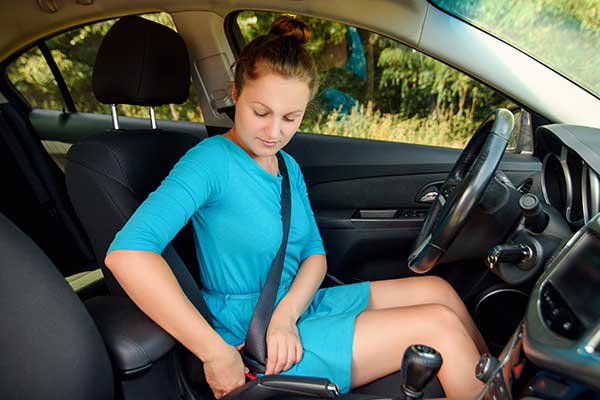Houston seat belt safety is becoming a bigger hot topic as it can save drivers, passengers, and small children if worn properly. According to the National Highway Traffic Safety Administration*, out of the 23,824 car accidents where the passenger was killed, 51% were not wearing a seat belt in 2020. There are certain Texas Laws to explain the correct usage of seat belt safety for car seats.
The month of May is the anniversary of the “Click it or Ticket” campaign* in Texas. Airbags are indicated to work with seat belts. If you do not wear a seat belt properly, you have a higher chance to suffer from severe injuries or death from the airbag. In Houston and other cities in Texas, everyone in a vehicle must use a seat belt correctly. Failure to do so will result in fines up to $200 or $250 for children not appropriately restrained in a car seat.
Seat Belt Safety for Children, Teens & Adults
It is necessary to follow specific instructions when following child safety seat belt usage. Failure to do so can lead to major injuries or death if a Houston car accident were to take place.
Texas Transportation Code 545.412 states that:
- If the driver of the vehicle does not have a child, either younger than 8 years or smaller than 4 feet 9 inches, in the proper child passenger safety seat system (car seat) they will suffer a misdemeanor offense and have to pay a $25 to $250 fine.
- The child passenger safety seat system references that an infant or child car or booster seat meets the federal standard for crash-tested restraint systems that have been set by the NHTSA.
Infants and toddlers must have a rear-facing car seat until they are two years old or reach the height for a front-facing car seat. There are potential choking and injury hazards if safety belts are not used correctly in car seats. A child’s weight, height, and age all play a critical role in positioning the car seat restraints.
According to the Texas Department of Transportation, vehicle accidents are one of the leading causes of serious injuries and death for young children. This is because the force from a crash can cause a child to be crushed against the seat belt if it is not appropriately fitted or it might not work at all because it is too loose.
Other guidelines for teens and adults state that all Houston drivers and passengers must wear a seat belt. Proper use for a safety belt is making sure it fits across the hips and not above the stomach. The shoulder belt should be over the should go across the chest and not put behind the shoulder or under the aim.
* Source:
- https://www.nhtsa.gov/risky-driving/seat-belts#:~:text=Overview,was%20at%2090.4%25%20in%202021
- https://www.txdot.gov/inside-txdot/media-center/psas/seat-belts/clickit.html

